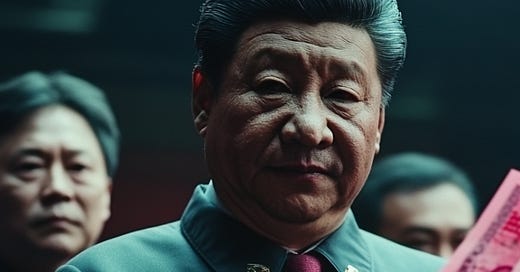Xi wants to win the Sino-US trade war by splurging on consumption
Beijing unveils further details on its consumption blitz for 2025.
At the end of last year, China’s Central Economic Work Conference declared that Beijing’s key mission in 2025 would be to “vigorously spur consumption, increase investment returns, and comprehensively expand domestic demand.”
The announcement arrived in anticipation of a Trump presidency, and tariff measures which threaten to undermine exports as a primary driver of China’s economic growth.
Even prior to an imminent Trump presidency, Beijing had been working on policy designs to drive growth in domestic consumption.
Chief amongst them were its cash-for-clunkers consumer subsidies for purchases of electric vehicles and household appliances.
Those policies helped to ensure that China’s end consumption expenditures made a 44.5% contribution to economic growth in 2024, driving a 2.2 percentage point rise in national GDP.
China signals intensification of its consumption drive
A recent blitz from China’s state-owned channels of opinion has reiterated the need for more consumption.
“Consumption is a main engine for driving economic growth,” declared an opinion piece published by the Communist Party’s flagship newspaper, the People’s Daily, on 15 February.
“We forecast that the overall consumption market will continue to display a steady growth trend,” said He Yongqian (何咏前), a spokesperson from the Ministry of Commerce.
He pointed to the need to “organically combine spurring consumption with improvements to living standards.”
China’s Ministry of Commerce highlighted five key work areas for driving greater consumption in 2025:
Expanding the scope of the cash-for-clunkers policy.
Holding innovative activities to drive commercial, tourism, cultural and fitness consumption.
Expanding services consumption and driving high-quality services consumption.
Cultivating and strengthening new forms of consumption, including digital consumption, green consumption and winter recreational consumption.
Improving consumption conditions and creating international urban consumption hubs.
Other authorities of the Chinese central government are also preparing policy plans to drive “organically combining the spurring of consumption with improvements to living standards.”
These include raising household incomes so that Chinese consumers can “spend with their minds at ease,” while driving growth in the quality and diversity of China’s supply of consumer goods and services.
Xiao Weiming (肖渭明), deputy chief-secretary of the National Development and Reform Commission (NDRC), said it would step up policy in four critical areas.
Driving increases in incomes and reductions in burdens for Chinese households. Supporting increases in the technical skills of more workers, to raise their incomes and positions. Devising “myriad plans” to expand incomes for rural residents. Appropriately increasing the basic pension, and raise the level of healthcare fiscal subsidies.
Diversifying the supply of consumer products. Increasing the intensity and scope of the cash-for-clunkers policy. Expanding services consumption. Creating marquee enterprise and service brands.
Cultivating new growth points for consumption. This includes industries with growth potential, particularly in relation to consumption by Chinese retirees. “Elderly travel and study consumption should enter the lives of more elderly people,” NDRC stated.
Improving the consumption environment. Improving commercial logistics and cold chain logistics systems. Effectively reducing society-wide logistics costs. Continue to improving the credit systems, and vigorously operating an “environment where people can consume with their minds at ease.”






China is already modeling a steady-state economic model that will start kicking in around mid-century.
It will keep a sustainable society moderately prosperous indefinitely.
We should be so lucky.